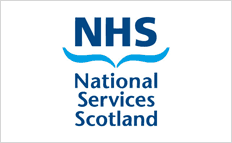Nickel (Ni)
Nickel is a toxic trace element and exposure may occur in nickel refining, electroplating, nickel/cadmium battery manufacturing and glass-making.53 The main effects noted in humans are through inhalation and skin contact. Toxic effects are local rather than systemic and include asthma, skin irritation and eczema in the 5-13% people with nickel sensitivity. Long-term exposure to certain nickel refining operations causes increased incidence of cancers of the lung, nasal sinus, and larynx, however, modern procedures for refining carry a much reduced risk. There is also concern about the exposure to nickel of welders welding stainless steel causing lung cancer, although it is difficult to separate the effects from those of chromium also present in stainless steel. Nickel carbonyl is a commonly used component which is lipid soluble and so more toxic than other forms.
Daily intake of nickel is about 250 μg/day most of which is excreted in the faeces. The biological half-time of nickel depends on the nickel species tested. For soluble compounds, the half-life of plasma nickel is 10 to 40 hours; for particulate compounds, half-lives of 30 to 55 hours have been recorded. A urinary elimination half-life of 17 to 48 hours has been reported for the absorbed dose following experimental oral exposure in humans.
It is not known if it is essential, although deficiency in some animals causes retarded growth, anaemia, and decreased enzyme activities. Nickel content of cigarettes is about 3 μg of which 10-20% is released in smoke and may be absorbed in lungs.
Measurement of urinary nickel concentrations on samples collected at the end of a working shift provides a practical and reliable index of occupational exposure to soluble nickel. Insoluble nickel compounds such as nickel sulphide and nickel oxide can build up in the lungs and be released slowly over time which may not be reflected in a change in urinary nickel levels.
Further Information
Health and Safety Executive on Nickel
Sample Requirements and Reference Ranges for Nickel
| Sample Type | Urine (Random) |
|---|---|
| Container | Universal container |
| Precautions | None |
| Minimum volume* | 1 mL |
| Reference range | < 20 nmol/mmol creatinine54 |
| Turnaround time | See this page for STEMDRL TAT targets |
| Method | Inductively coupled plasma mass spectrometry |
| Traceability | Traceable to reference material produced in accordance with EN ISO 17511:2003 “In vitro diagnostic medical devices. Measurement of quantities in biological samples. Metrological traceability of values assigned to calibrators and control materials” and reference materials with values determined by reference laboratories. |
| Intermediate Precision (CV) | See this page for latest data |
| Measurement Uncertainty, U | See this page for latest data |
| Analytical Goals (CV) | See this page for latest data |
| EQA Scheme | UK NEQAS, Guildford (once per month). |
| Included in UKAS scope? | Yes |
* Absolute minimum volume; this volume is insufficient to carry out repeat analysis if analysis fails.

